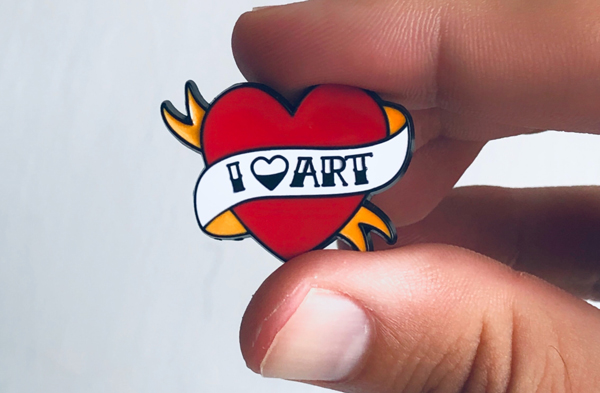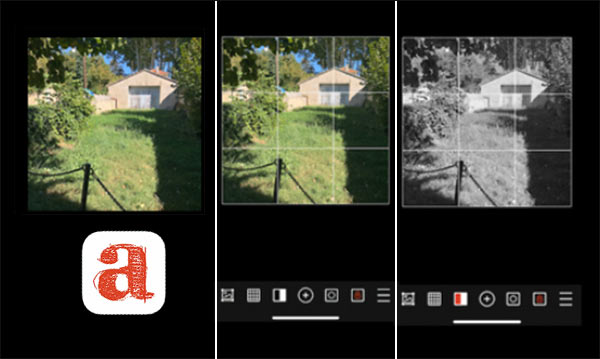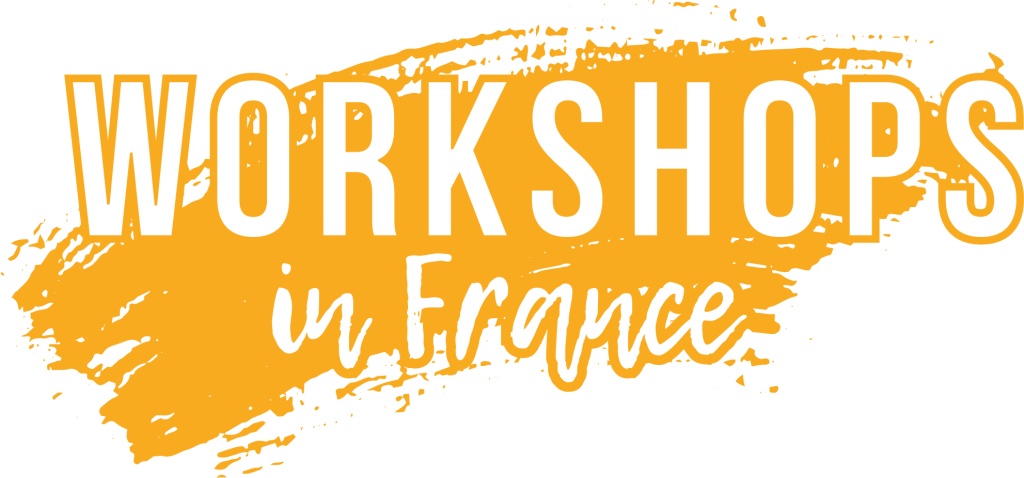5 Ways to Light Paintings

It makes a huge difference to how the artwork looks. Under poor light, a painting can disappear into the shadows, and if left in direct sunlight, it can be damaged forever.
Correctly lit artwork can completely inspire the viewer but if hung in a poorly lit location it will not have had the same impact.
Introducing Our 2022 Scholarship Recipient

Once a year, we offer a scholarship to one of our exclusive workshops. The recipient is an up-and-coming artist faithfully chasing their future goals. We do this because we’re very interested in inspiring those who are dedicated to painting and pursuing lives as working artists.
Yellow Ochre Lifted from Nature’s Palette

Yellow ochre is a naturally mined pigment used by artists everywhere. One of the must-see villages in Provence is Rousillon, where this multi-hued pigment was mined. You see it as orange, pink, and red on the walls of all houses and the red rock faces for the surrounding hills.
Hacking Instagram’s Hashtags

There are plenty of reasons to use hashtags on social media.
By the way, when we talk about social media for artists we’re really talking about Instagram. And the one thing that we know about Instagram is that it’s far from being instant, it takes time. So why invest all that time, if you are not getting results?
The French You Already Speak

You Already Know More French Than You Think. Just for fun, we started looking at the French words that have been in common usage in the English language for a long time. Remarkably, many of these words seem to pop up in the realms of culture and cuisine. No surprise there, as France is known for exactly that – their wonderful culture and delicious cuisine. Let’s start right here with food! Cuisine “Cuisine” – This is exactly the same word in both languages. Let’s look at some more… You already know so many of them! With this in mind, rest assured you won’t starve! “Restaurant, chef, café, vinaigrette, gâteau, sauce, pique-nique, salade, soupe, aperitif, menu, croissant, hamburger, chocolat.” Ha! And, there’s “silhouette”, which might change depending on your consumption of the aforementioned. The Arts and La Renaissance We also find a host of French words in the world of art. Florence, Italy was the epicenter of the greatest rebirth of creativity which the Italians call the ‘Rinascimento,’ but in English and in French we refer to it as the Renaissance. Art in French is ‘Art’, pronounced Arr, even in the plural. Let’s look at a few more art terms. Art nouveau, art deco (art décoratif), artist (artiste), impressionism (impressionisme), avant-garde, realism (réalism), surrealism (surréalisme), cubism (cubisme), trompe l’oeil, paper maché (papier-mâché) and film noir. Although French is also the language of ballet, it was actually brought to France from Italy by Catherine de Medici. Ballet dancing as we know it was adopted by the French royal courts where it flourished. “Cuisine” – This is exactly the same word in both languages. Let’s look at some more… You already know so many of them! With this in mind, rest assured you won’t starve! “Restaurant, chef, café, vinaigrette, gâteau, sauce, pique-nique, salade, soupe, aperitif, menu, croissant, hamburger, chocolat.” Ha! And, there’s “silhouette”, which might change depending on your consumption of the aforementioned. Royalty and French French was the official language of the courts, that is, the Royal courts. Around 700 years ago it was the most widely spoken language throughout all of Europe. At that time, the rulers in Europe used French to communicate with each other. It was spoken by their liaisons and international treaties were hashed out in French. No doubt a few French swearwords were tossed around at those who disagreed. French was the language of the gentry. It was generally seen as the language of sophistication, power and wealth. It became a popular second language. By the end of the middle ages, the lingua franca of Europe was indeed French. Of course, the term ‘lingua franca’, is Latin and not French, but it means the language used between people who do not share a common language. A contemporary example of a lingua franca would be Emoji. ❤️ 🇫🇷 🍷 Pronunciation So, you do know these words, but do they sound French when you say them? Probably not. It’s the pronunciation that makes them French. So here’s the mini-lesson of French pronunciation. It’s very general, but it should help. Firstly, the French pronounce every syllable without the English way of stressing one syllable over the others. Take “pronunciation”. We say “PRO-NUN-SEE-AISHUN”, with the stress on NUN, the French would say each syllable – “PRO-NUN-SEE-A-CEE-ON”. If that doesn’t slow you down a bit, the French also tend to drop or swallow the very last consonant if it ends the word. Yes, drop the last consonant, unless the next word starts with a vowel, in which case you need to add it back in. Complicated? Oui! Even More French To round out this blog on the French words you already know, look at these: R.S.V. P. (Répondez S’il Vous Plaît); bourgeois; brunette; blonde; déjà vu; fiancée; chic. All French and all English too. There must be so many more but hopefully these will give you a little confidence about being able to speak this beautiful language. In order to gain more understanding of French and the culture of France, may we suggest that you drink good coffee, share excellent wine and come join us on an artistic and inspirational journey with WorkshopsInFrance. Blogger: Julie Snyder Julie Snyder is a professional artist and also the programs director of Workshops In France. A native of Scotland, she is a seasoned traveler who splits her time between California and France. You can learn more about her role with Workshops in France here and about her painting on her website.
Workshops in France’s Top 9 Instagram Accounts for Inspiration

Life is an art.
Inspiration is sometimes needed to keep us motivated. Instagram has inspirational content. They call it inspo.
I am recommending here, 9 super Instagram accounts to follow. When I open my app I expect to see images of fabulous French life, and my soul is filled with inspiration.
Venetian Red—Loved by Painters, Hated by American Colonists

Like many colors used on the palettes of today’s artists, Venetian Red has a fascinating and dramatic backstory. In addition to its place in art, it holds a special place in British history and the American Revolution.
Introducing Our 2020 Scholarship Recipient

Once a year, we offer a scholarship to one of our exclusive workshops. The recipient is an up-and-coming artist faithfully chasing their future goals. We do this because we’re very interested in inspiring those who are dedicated to painting and pursuing lives as working artists.
Review: ArtTools App for Plein Air Painting.

Time is of the essence for the plein air painter.
When you’re painting outdoors and trying to get something down on canvas, time is precious. From the moment you set out that day, you’re battling the sun’s movement across the sky. Anything that can save you time is fantastic…
What to Bring on Plein Air Trip. Besides Your Painting Supplies.

As far as actual painting supplies go, there are many lists of what to take when plein air painting. Just Google them. Over the past 10 years of delivering plein air workshops and after 1000s of paintings outdoors, we have discovered there are other things that can save the day which might not be obvious and are not on everyone’s list. In addition to painting gear, what else qualifies as handy, timesaving and essential to your painting enjoyment? Some may consider these superfluous, especially if weight and distance are real factors—but bear in mind we do bring our guests as close as possible to painting locations to avoid such burdens. Some of our recommendations are: 1. Multi-tool Very handy when you cannot unscrew that lid off a tube of paint. Or you wish you had a pair of scissors. Or your French easel’s wing nuts need an extra torque. 2. Spring Clips Clip canvas to a board, provide extra security for your umbrella, or clamp on a holder to support the handle of your solvent wash tank. 3. Collapsible Cups This is for, um, drinking. Just watch what you drink when you paint (just sayin’). If your paint is water-based, such an item is an obvious space saver to hold water. 4. Water Okay, this is probably on every list—as it should be every time you go and paint anywhere. Dehydration can completely ruin your efforts. We do provide bottles of water for guests in our workshops, but just to be ecological we encourage them to refill bottles from the tap. The water at the various chateaux is fine (you can even find the same water bottled, labeled and sold in the village). 5. Bear Spray Yep, you read that right. The contributor of this tip says “I always carry it if I’m painting alone (I’ve had a few creepy incidents and feel safer with it). I’d recommend it for anyone painting alone, especially in a remote location. Sometimes we can get so immersed in our work that we aren’t alert to potential dangers. It’s similar to pepper spray but not designed to debilitate bears, so it’s not as strong as pepper spray. It is designed to deter and stop a charging bear.” 6. Your Smartphone Maybe this is a redundant point—do we ever go anywhere without it? But nowadays it’s become the go-to tool. Its camera is the most ubiquitous tool—you can take reference photos, convert them to black and white to see the values in the scene. iPhones have a compass, so you can track the movement of the sun and decide where to set up in relation to this important piece of information. You can set a timer, tell the time, text a friend, send for back-up, play music, make or dictate notes. Geo-tag your photos so in the future you can return to that exact same spot. 7. Baby Wipes Baby wipes are great to have on you for so many reasons. Spills, drips and splashes – wipes to the rescue. Let’s face it, art is messy. But we have also used baby wipes to clean brushes, they clean them so much better than paper towels. Once you try them, you will probably never go back to paper towels. 8. Bug Spray If you’re me, you cannot leave without it. I am irresistible to mosquitoes and the like. If you stand next to me, you’ll probably not need any, as the mosquitoes will be seeking me. I spray my exposed limbs, my shoes and my hat. I often use natural repellents that are heavy on citronella. It has a strong smell—sorry, but it works. 9. Nitrile Disposable Gloves Even if you don’t wear gloves to paint, these are great to have anyway. If you have to tackle anything you’d rather not handle because it’s dirty, use the gloves. Emptying garbage, pumping gas, cleaning you palette, wiping down your equipment is always easier if you don’t get your hands dirty. And they take up next to no room. 10. Carabiner A carabiner can serve to suspend a solvent wash tank. It can be used to suspend a weight to hold your easel steady in the wind—just fill your backpack or your garbage bag with a few rocks and hang it from the center of your easel. Then, after you’re done you can use it to clip your solvent tank or trash bag to the outside of your backpack. Region Specific You may need to bring very specific supplies depending on where you paint. For example, in certain zones you may need to worry about snakes. If you’re painting in Northwest Europe, you have to think about rain gear. If you are very far north you may need additives to prevent your paint from freezing. Good luck and happy painting! Thanks so much to Jane Hunt, Celeste De Coudres and Fallon Peper for their input. Blogger: Julie Snyder Julie Snyder is a professional artist and also the programs director of Workshops In France. A native of Scotland, she is a seasoned traveler who splits her time between California and France. You can learn more about her role with Workshops in France here.
